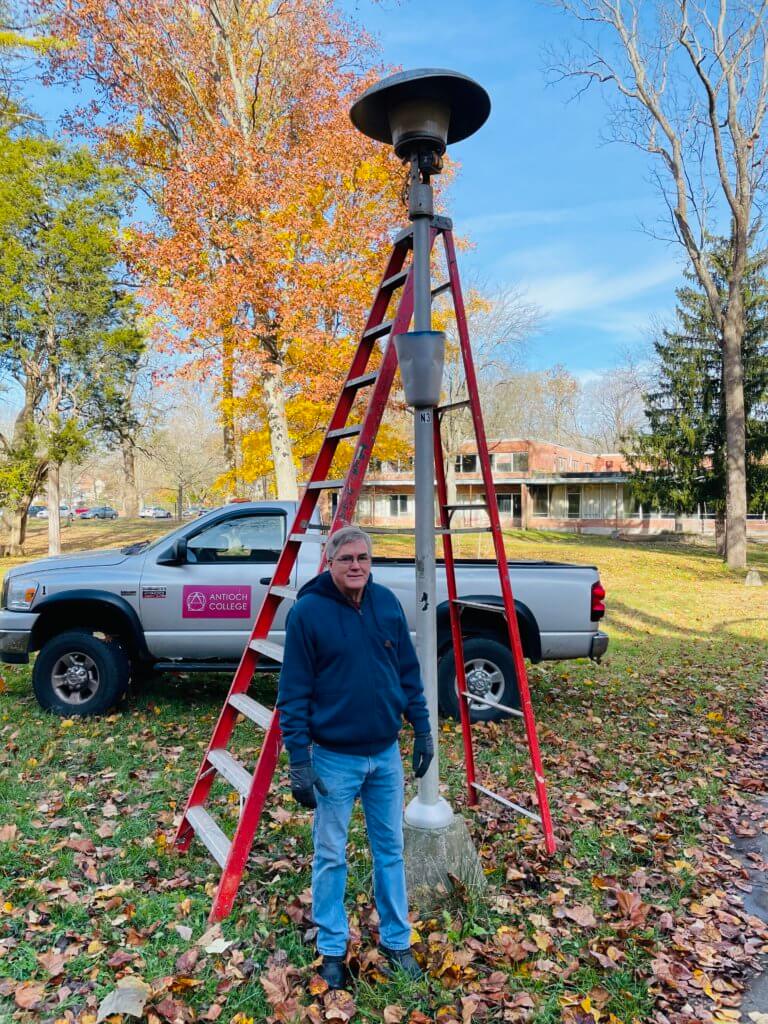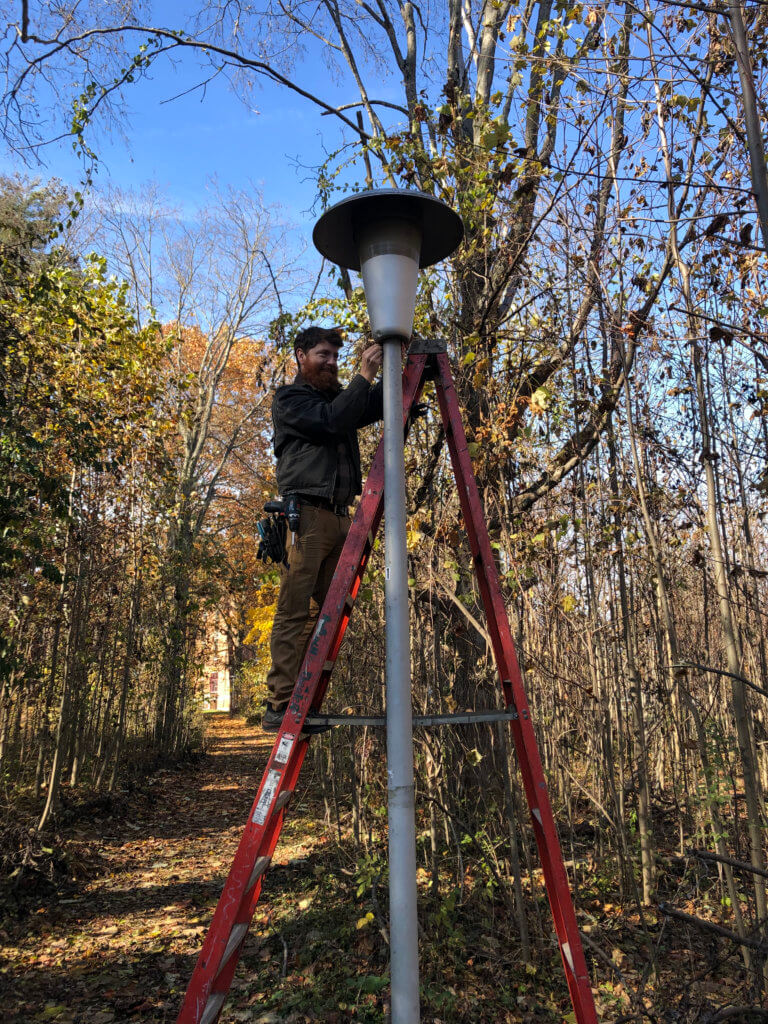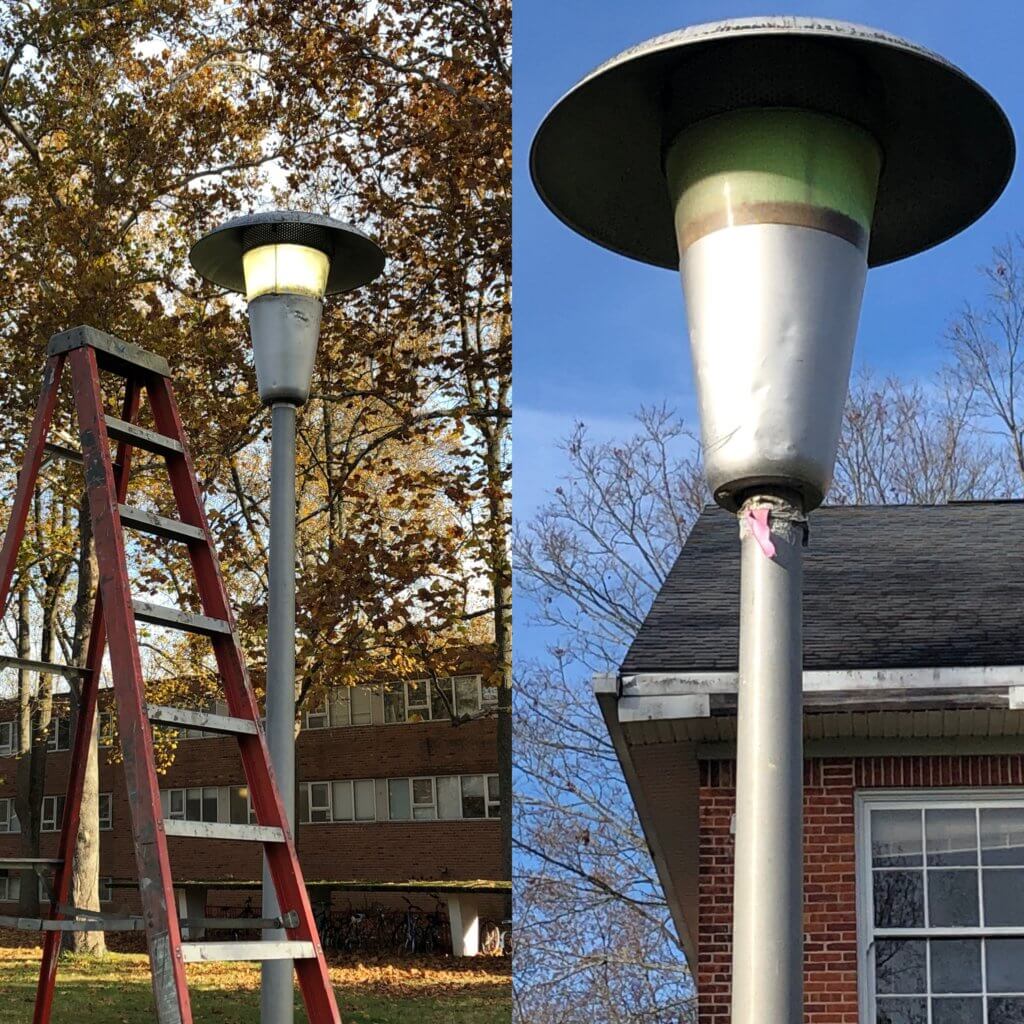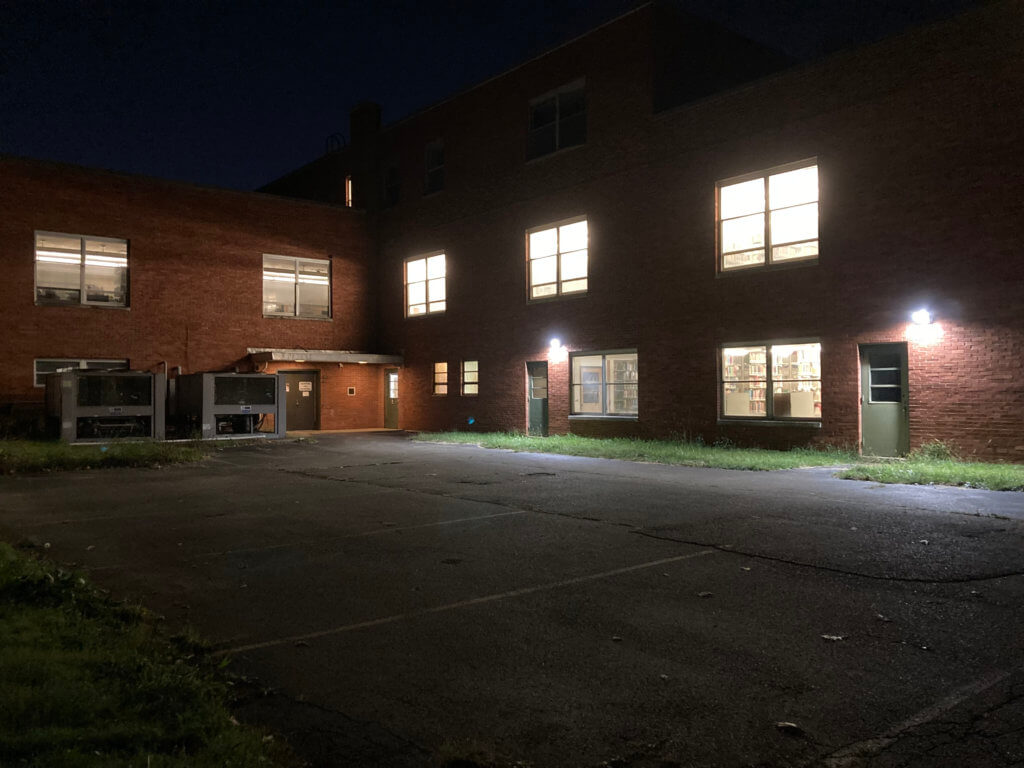
Mike Fair, Maintenance Manager at Antioch College. Photo by Matt Walker ‘04.
As the holidays approach and the Fall term comes to a close Mike Fair, Maintenance Manager at Antioch College, springs into action with campus repairs and upgrade projects. The first order of business is a project that revolves around campus safety, specifically, lighting. The project is funded by an anonymous donor and aims to improve outdoor lighting campus wide.
This first step was to remove foliage from around light sources. Mike and Zavinie Brooks, Maintenance Technician at Antioch, hauled away twelve truckloads of vines, branches, and other debris. After that, participants in the Volunteer Work Project widened the margin alongside the walkway that goes from Weston Hall to the Arts and Science Building. Originally, the walkway had only four feet on either side but the margin was increased to eight feet.
A major part of this project is to replace the light sources in all 37 of the light poles scattered across campus. Mike has been braving the cold this week along with electricians Cassidy and Paul from Regulated Watts, a local Greene County company, to upgrade the lights from metal halide bulbs to LEDs. Mike has gone through the light poles and organized them into groups based on their location and proximity to the various buildings. The poles have been fully tested, documented, and labeled.

Cassidy from Regulated Watts upgrades a light pole on the path through the forest. Photo by Mike Fair.
Originally, the bulbs housed in the poles were a 175 watt metal halide type bulb. They are expensive to replace ($100 each) and run off a ballast system which is not energy efficient. The old bulbs also take ten minutes to fully power up. Once on, they emit a faint, sickly-green light.

A side-by-side comparison: On the left, the new LEDs shine brightly even during full daylight. On the right, the old, metal halide’s faint glow is hardly noticeable. Photo by Mike Fair.
The new bulbs will be LEDs. The LEDs use less than half the amount of energy as the metal halide bulbs. When they are turned on, they reach full power immediately and emit a bright, white light.
Additionally, the lamp posts are bolted down to a concrete base but on six of the poles the mounts are cracked. A local aluminum welder will be coming out this week to fix the cracked mounts.
Currently, seventeen of the thirty-seven lamp poles have been upgraded to LEDs. The majority of the project is projected to be completed before the year is through. However, due to winter weather, the finishing touches might have to wait until the spring.
Another part of the lighting upgrade project is swapping out the lights on building exteriors. Mike and his team have put LED wall packs in place of the dim, metal halide blubs in several places. They have made the parking lot behind Olive Kettering Library much brighter. And they have also brightened up the area around the Physical Plant where car break-ins have been reported repeatedly.

New LEDs cast a bright light into the depths of the Olive Kettering Library parking lot. Photo by Mike Fair.
Already, several staff and students have commented to Mike on how much brighter the campus is. This project originally came out of a community meeting where students expressed their concern that the campus was too dark and therefore unsafe. So the fact that things are progressing quickly is excellent news. We would like to extend a warm ‘Thank You’ to Mike Fair and his crew, as well as to the donor who made this project possible.
Stay tuned for more info on campus upgrades coming soon!
